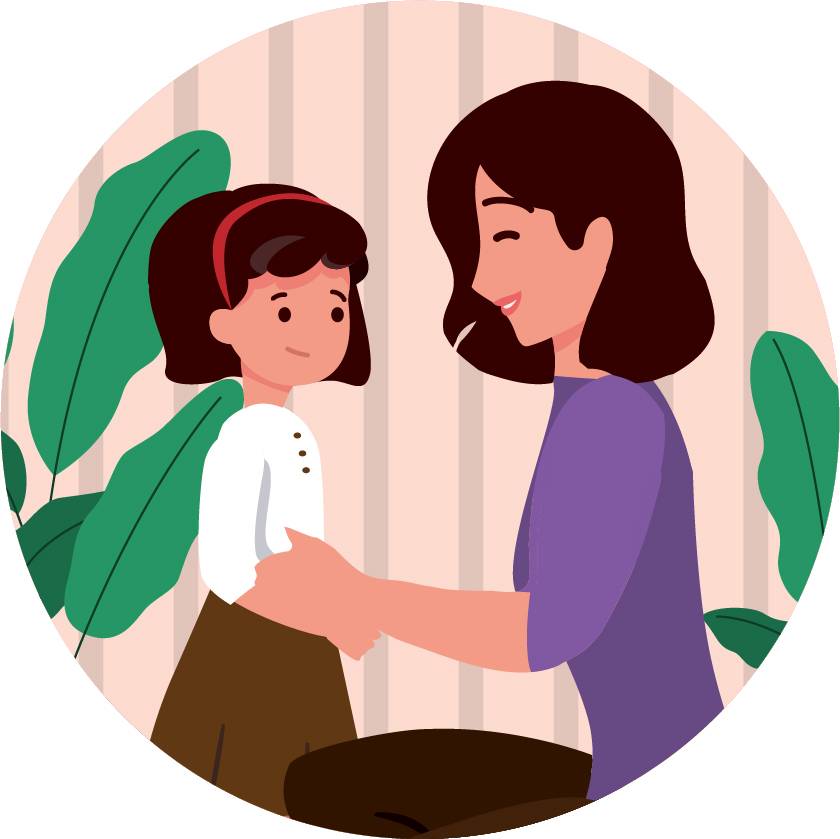Boundaries and big feelings: Parenting in a divided home

I didn’t know what to expect from this round of parent-teacher conferences. I have attended each one since my children started kindergarten, but as we continue to adjust to recent major life changes, I was a bit anxious about what I would hear.
My children have different coping mechanisms; while one channels their rage by sublimating and overachieving as if to prove they can do without, the other tends to swing between being consumed by despair and giving in to impulsivity.
Regardless, I’m glad that my kids’ teachers confirmed that they remain participative in class and are respectful and kind. More than any commendation or award, the best compliment is being thanked by my children’s teachers for raising them well.
Parenthood is challenging enough, but when your children shuttle between parents with differing approaches, it gets trickier. Add to the complexities of raising kids juggling multiple responsibilities while dealing with a chronic disease like Parkinson’s, I sometimes feel stretched to the breaking point.
Parenting as sparring
A recent episode of The Heartful Parent Podcast by Christy Keating shed light on strategies for managing parallel parenting. As a martial arts practitioner in jiujitsu and taekwondo, I approach parenting like sparring: stay grounded, anticipate moves, and never let fleeting pain dictate your game plan.
Here are my reflections and takeaways from the podcast, tailored for parents on similar paths.
Parallel parenting is a dance, complicated by divided parenting approaches, teen development, sibling dynamics, and parental burnout. It’s tempting to focus on the chaos, but peace begins with controlling your own space and actions.
Mastering this mindset is necessary; amid betrayal, my children needed stability more than ever. The unpredictable nature of Parkinson’s means I can’t afford wasted energy worrying about someone else’s parenting.
When we create a loving and structured environment, our kids will find a safe haven, no matter the storm. I leaned into maintaining routines like consistent mealtimes, bedtime chats, and regular jiujitsu. These rituals provide comfort, even when emotions run high.
Teens and preteens ache for connection; building a solid relationship with them is our best investment. Dedicate one-on-one time to activities your kids enjoy such as binge-watching “Modern Family” or making slime. These moments create lasting memories and build trust. Simple habits like going for a pan de sal run, making pancakes, or an impromptu art jam foster open communication and emotional safety.
I maintain nightly family meetings as sacred space to discuss concerns and share wins and learnings. My kids appreciate being heard and included, and thankfully, still like cuddling even if they’re bigger than me.
Teenagers push limits where they feel safest, often unleashing big emotions. While stressful, it’s a testament to their trust in you. Keating suggested validating their feelings while reinforcing expectations: “I know it’s tough navigating two sets of rules, but this is how we do things here.”
Acknowledging their feelings while staying consistent reassures them of your steadiness. Start with “I know this feels unfair,” followed by an explanation of why your rules remain. “It’s exhausting, but worth it,” assured Keating.
In heated situations, kids often resist mindfulness strategies, so introduce these tools during quiet moments. Practice calming exercises together, like yoga, drawing, or journaling, when things are peaceful.
Self-care
Prioritize self-care; you can’t be an anchor for your kids if you’re drowning. For me, self-care looks like a short run or getting my nails done. These moments of reprieve allow me to show up fully for my kids when they need me most. Use the time your kids spend with the other parent to refuel, whether through hobbies, exercise, or rest.
Martial arts training, running, and dance class have been my lifesavers. The discipline of these practices not only strengthens my body but also clears my mind. Whether on the mat or finishing a sudoku or crossword puzzle, these moments remind me that self-care isn’t selfish; it’s essential.
Boundaries may seem restrictive to teens at first, but they offer long-term security. While the other parent’s permissive style creates temporary allure, children eventually recognize the value of consistent rules in reducing their anxiety. Over time, they’ve come to appreciate my predictability because they know they can rely on me; I am grateful for when they express it.
Parenting is a marathon, not a sprint, especially in a fractured household. I’ve learned that while I can’t control everything, whether it’s my health, the other parent’s decisions, or my children’s struggles, I can always choose to create a space where love and stability prevail.
My kids and I are on a turbulent trip we didn’t ask for, but it’s also an opportunity to teach resilience and model unconditional love. We’ve faced our share of storms, from personal health battles to the heartbreak of betrayal; focusing on what we can control has been a game changer.
Even in a less than ideal situation, by fostering connection, setting boundaries with empathy and loving oneself, we can still create an environment where our children feel supported and secure. Parenting isn’t about perfection; it’s about showing up, every single day, with love, patience, and the determination to grapple with any struggle together.

















